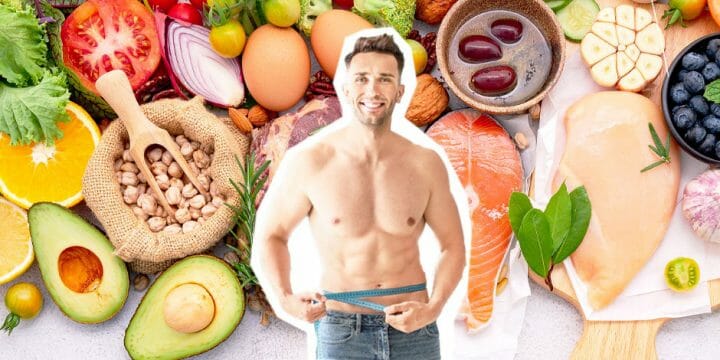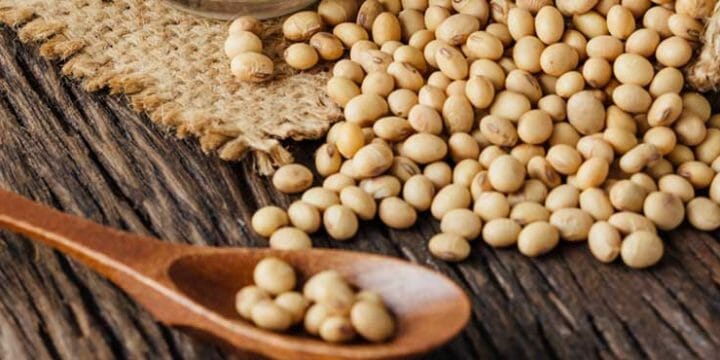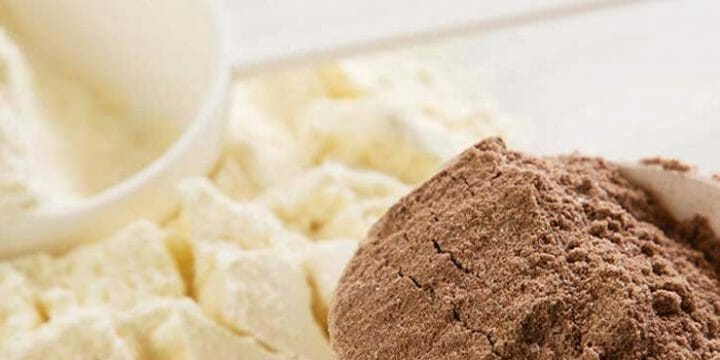Vegans can obtain adequate amounts of protein by consuming various plant-based sources of complete and incomplete proteins.
As a health and performance coach, I worked with many vegan bodybuilders and researched which vegetables they should consume to maintain a vegan diet while meeting protein requirements.
Suppose you're a vegan looking to increase your protein intake. In that case, this article will tell you what vegetables contain protein and which vegetables you should consider eating to get the most protein.
Quick Summary
- Edamame, quinoa, and spinach are among the top choices for those seeking high-protein vegetables, offering both taste and nutritional benefits.
- This high protein content makes it an excellent choice for anyone looking to increase their protein intake through vegetables.
- According to a study from the National Center for Biotechnology Information, microwaved Brussels sprouts contain the highest amounts of total carotenoids (0.35 mg/g) and chlorophylls (3.01 mg/g), surpassing both steamed and uncooked samples.
- In my own diet, incorporating edamame has been a game-changer, offering a delicious way to boost protein intake.
10 High-Protein Vegetables to Include in Your Diet

Not all plant-based protein sources contain nine essential amino acids. Knowing which vegetables contain complete proteins allows you to make good choices about which vegetables to include in your diet.
The best vegan high-protein vegetables contain all nine amino acids that the body cannot produce.
The following list contains complete and incomplete plant-based protein sources and their protein and calorie content.
1. Edamame
Protein per 100 grams (cooked): 11 grams
Edamame, or cooked soybeans, is a tasty, nutritious snack high in fiber, vitamin K, and antioxidant compounds, which help reduce high blood lipid levels [1].
It has a high-calorie count of 122 and has a more significant amount of protein compared to most vegetables on the list.
Based on my experience, edamame is excellent in soups, stir-fried vegetable dishes, and pureed to create a dip.
2. Lima Beans
Protein per 100 grams (boiled): 8 grams
Lima beans are high in iron and potassium and are a good source of protein fibers.
Despite being incomplete proteins like pinto beans, both are popular with athletes for their branched-chain amino acids valine, leucine, and isoleucine, which promote muscle growth [2].
Lima beans have 115 calories and can be used as a side dish or season to soups.
3. Soybean Sprouts
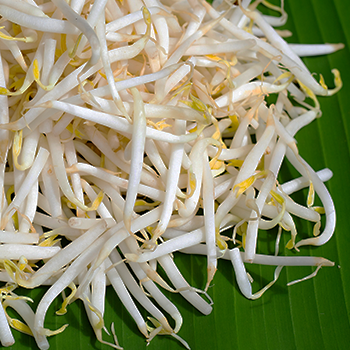
Protein per 100 grams: 3.04 grams
Soybean sprouts are high in vitamins A, C, and K, which help increase the body's antioxidant defense.
According to an article from the Integris Health website, they are high in fiber, which can help you lose weight, and their complete protein content can help you build and repair muscle tissue [3].
Soybean sprouts are very low in calories at 30 and make a great addition to Korean dishes and stir-fries, soups, and vegetables to add crunch, at least in my experience.
4. Green Peas
Protein per 100 grams: 5 grams
Green peas contain minerals beneficial for the heart, such as calcium, magnesium, and potassium [4].
In either fresh or frozen form, this incomplete protein can help reduce inflammation and blood pressure, reducing the risk of chronic diseases.
With only 81 calories per 100-gram serving, you can serve them alongside seafood or other high-protein foods like cheeses and poultry or as a grain dish.
5. Quinoa
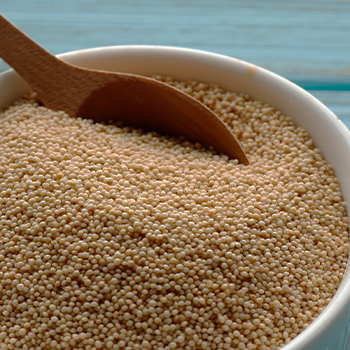
Protein per 100 grams (cooked): 4.4 grams
Quinoa is one of the most nutritious plant-based foods that offer many health benefits, such as improving blood sugar and cholesterol levels [5].
Unlike most vegetables, quinoa is a complete protein rich in dietary fiber, zinc, magnesium, and antioxidants.
Quinoa contains 120 calories and is ideal for breakfast porridges and salads. It also makes an excellent side dish for almost any meal.
6. Spinach
Protein per 100 grams (cooked): 2.88 grams
According to another article from the HealthCentral website, spinach is considered a complete plant-based protein that can help maintain bone health [6]. Calorie-wise, it is low at 40, high in calcium, phosphorus, and magnesium.
"Eating spinach is beneficial for maintaining healthy skin, hair, and strong bones, as well as helping with digestion, lowering the risk for heart disease and improving blood glucose control in diabetics."
- Megan Ware, Registered Dietitian Nutritionist Based in Orlando, Florida
Consuming cooked spinach rather than raw spinach will help you better absorb its calcium and iron content [7].
7. Asparagus
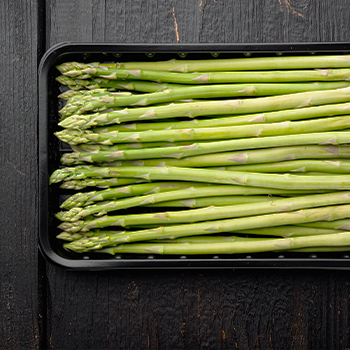
Protein per 100 grams (cooked): 2.33 grams
Asparagus is considered an incomplete protein, but it is still a good, low-calorie protein source that can help you keep a healthy weight since it only contains 39 calories.
It contains a significant amount of inulin, a prebiotic fiber that contributes to the growth of friendly intestinal bacteria [8].
The last time I combined it with a large amount of stone fruit, it made a delicious fruit salad.
8. Mustard Greens
Protein per 100 grams (boiled): 2.6 grams
Mustard greens only have 26 calories and are considered an incomplete protein source. However, they have high levels of vitamin E, C, K, and B and phenolic compounds, which give them antioxidant properties.
A test-tube study demonstrated that steaming mustard greens increase their ability to bind to bile acids, thereby lowering cholesterol levels [9].
Chopped mustard greens can be steamed, boiled, sautéed, or eat them raw to enjoy the distinct mustard flavor.
9. Brussels Sprouts
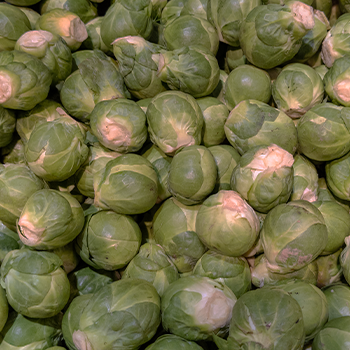
Protein per 100 grams (cooked): 2.47 grams
Eating one cup of cooked Brussels sprouts provides more than the daily recommended vitamin C and K requirements.
They are an incomplete protein source high in phenolic compounds [10], which have anti-inflammatory properties and treat liver cancer.
With only 55 calories, brussels sprouts can be delicious when topped with shaved lettuce or mayonnaise.
10. Broccoli
Protein per 100 grams (cooked): 2.8 grams
Broccoli is a low-calorie protein source (34 calories) and an incomplete protein, but it is high in essential nutrients such as iron, calcium, selenium, and B vitamins.
Research suggests that people who eat cruciferous vegetables, such as steamed broccoli may reduce their risk of developing prostate cancer, breast cancer, and lung cancer [11].
When it comes to cooking and preparing it, the possibilities are nearly endless.
Related Articles:
FAQs
What Is the Historical and Cultural Significance of High-Protein Vegetables?
High-protein vegetables have played a vital role in various cultures' diets for centuries, offering both nutritional and cultural value. For example, lentils are a cornerstone in Indian cuisine, symbolizing sustenance and simplicity, while beans are integral to traditional Mexican dishes, representing a fusion of indigenous and Spanish influences.
How Does the Protein Quality and Bioavailability in Vegetables Compare to Animal Proteins?
The protein in vegetables often has a different amino acid profile compared to animal proteins, which can affect its bioavailability. While plant proteins might be less absorbable, combining different plant sources can provide a complete amino acid profile similar to that of animal proteins.
What Is the Environmental Impact of Growing High-Protein Vegetables Compared to Animal Protein Sources?
High-protein vegetables generally have a lower environmental impact than animal protein sources, requiring less water and land and producing fewer greenhouse gases. This makes them a more sustainable and eco-friendly protein choice, particularly important in the context of global climate change.
Can You Share Some Innovative Recipes and Cooking Methods for High-Protein Vegetables?
Innovative recipes for high-protein vegetables include sprouting lentils to enhance their nutrient availability or fermenting beans to improve digestibility. Combining these vegetables with grains or nuts in recipes can also create dishes with complete proteins, offering a balanced amino acid profile.
What Are the Health Benefits of High-Protein Vegetables Beyond Their Protein Content?
Beyond their protein content, high-protein vegetables are rich in fiber, vitamins, minerals, and antioxidants, contributing to overall health and well-being. These nutrients support various bodily functions, from digestive health to immune system strengthening, making these vegetables a valuable part of any diet.
References:
- https://www.healthline.com/
- https://fitaudit.com/food/
- https://integrishealth.org/resources/on-your-health/2022/august/how-to-eat-complete-proteins-in-vegetarian-and-vegan-diets
- https://www.healthline.com/nutrition/
- https://www.healthline.com/health
- https://www.spineuniverse.com/
- https://www.consumerreports.org/
- https://www.healthline.com/
- https://www.sciencedirect.com/
- https://www.ncbi.nlm.nih.gov/pmc/
- https://www.webmd.com/cancer/
About The Author
You May Also Like
